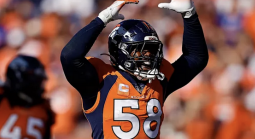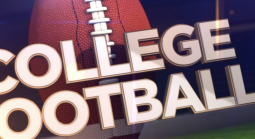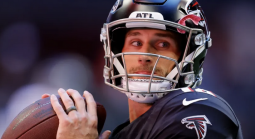Why is the NFL Not Popular Outside the US? American Football Global Challenges
Explore NFL sports betting challenges and why American football struggles internationally despite US dominance. Discover cultural barriers, soccer competition, and future expansion plans.
American Football: Why Only Americans Like It
The National Football League is absolutely massive in America - seriously, nothing comes close. December 2024 data shows the NFL captures 62% of American sports fans (34% die-hard, 28% casual), leaving baseball (49%), basketball (47%), and hockey (31%) in the dust. This popularity translates to incredible money: NFL broadcasting rights cost $17.4 million per game - almost double what the Premier League gets at $10.5 million.
American football is basically America's national sport. NFL teams rake in billions from sponsorships, merchandise, and stadium naming rights that major corporations fight over. The Super Bowl? It's not just a game - it creates a massive NFL sports betting phenomenon worth hundreds of millions every February. Modern football sports betting offers everything from player props to live betting that keeps millions glued to their screens during football games.
But here's the weird part: American football completely dominates at home yet struggles everywhere else. While soccer rules the planet and penetrates every culture, the NFL can't seem to break out of American borders. This geographic limitation represents one of sports' most puzzling paradoxes.

Why the NFL struggles internationally
The National Football League spends millions trying to go global. NFL games in London sell out consistently, Frankfurt breaks attendance records, and Mexico City draws huge TV audiences - sounds great, right? But these wins hide bigger structural problems that prevent true worldwide adoption.
The real issue? Infrastructure and complexity. American football needs things most countries simply don't have: specialized stadiums, trained coaches, and equipment networks that took America decades to develop. Soccer works with any field and basic gear - kids can play with just a ball. American football? You need purpose-built facilities, expensive protective equipment, and rules so complex even American fans constantly argue about referee calls.
This complexity absolutely kills international interest. Kids anywhere "get" soccer in minutes - kick ball, score goals, simple. American football's down system, field position strategies, clock management - it's like learning a completely new language that scares away casual viewers before they even understand what's happening.
Cultural competition is tough
American football doesn't just compete with other sports - it fights centuries of tradition. Soccer isn't just popular globally; it's part of national identity from Brazil to Germany. Rugby dominates New Zealand like American football owns Texas. The name confusion doesn't help. Americans call it "football" but the world calls soccer "football." When people hear "American football," they immediately think "not my sport."
Rugby vs American football shows the challenge. Rugby has similar action but simpler rules and no armor, making it more accessible. Rugby teams have 13-15 players with continuous action versus American football's stop-start style.
Betting markets prove this. European sportsbooks offer basic American football bets - usually just winners - because demand is tiny. USA football betting has hundreds of markets covering every stat imaginable. This gap in online casino CZ platforms versus American sites shows how American football's complexity hurts it internationally. The numbers tell the story: Mexico leads non-US NFL fans with 23.3 million, Brazil has 19.7 million. Impressive? Sure. But soccer has billions worldwide.
Safety concerns hurt expansion
American football's injury reputation is probably its biggest international problem. The sport runs from NFL professional level down to high school, all facing mounting safety questions that make parents worldwide extremely nervous. Just look at the gear requirements: helmets, shoulder pads, protective equipment costing thousands per player. Parents worldwide see this massive equipment setup and immediately think "dangerous sport." Hockey has similar contact levels but allows much more fluid movement. American football creates explosive collisions between heavily armored players moving at maximum speed - it looks terrifying to outsiders.
Medical research hasn't helped the image at all. Studies linking NFL players to brain diseases like chronic traumatic encephalopathy (CTE) make international headlines regularly. Football players suffer significantly higher injury rates than basketball, baseball, or hockey athletes, despite the National Football League's extensive safety improvements and rule modifications over recent years.
Countries developing youth sports in the USA naturally gravitate toward safer alternatives - soccer, basketball, tennis - rather than risking the serious health concerns associated with American football. Most international markets completely lack specialized gear stores, properly equipped training facilities, or qualified coaches familiar with safety protocols anyway.
Media barriers are real
NFL broadcasts face serious timing disasters internationally. Prime-time NFL games - those Sunday and Monday nights that completely captivate American audiences - happen during early morning hours across Europe and Asia. Try building fan communities when games air at 6 AM local time.
The National Football League's massive $17.4 million per game broadcasting costs make international television deals economically challenging for foreign networks operating on much smaller budgets. European broadcasters can acquire soccer content for fractions of NFL costs while reaching far larger, more engaged audiences.
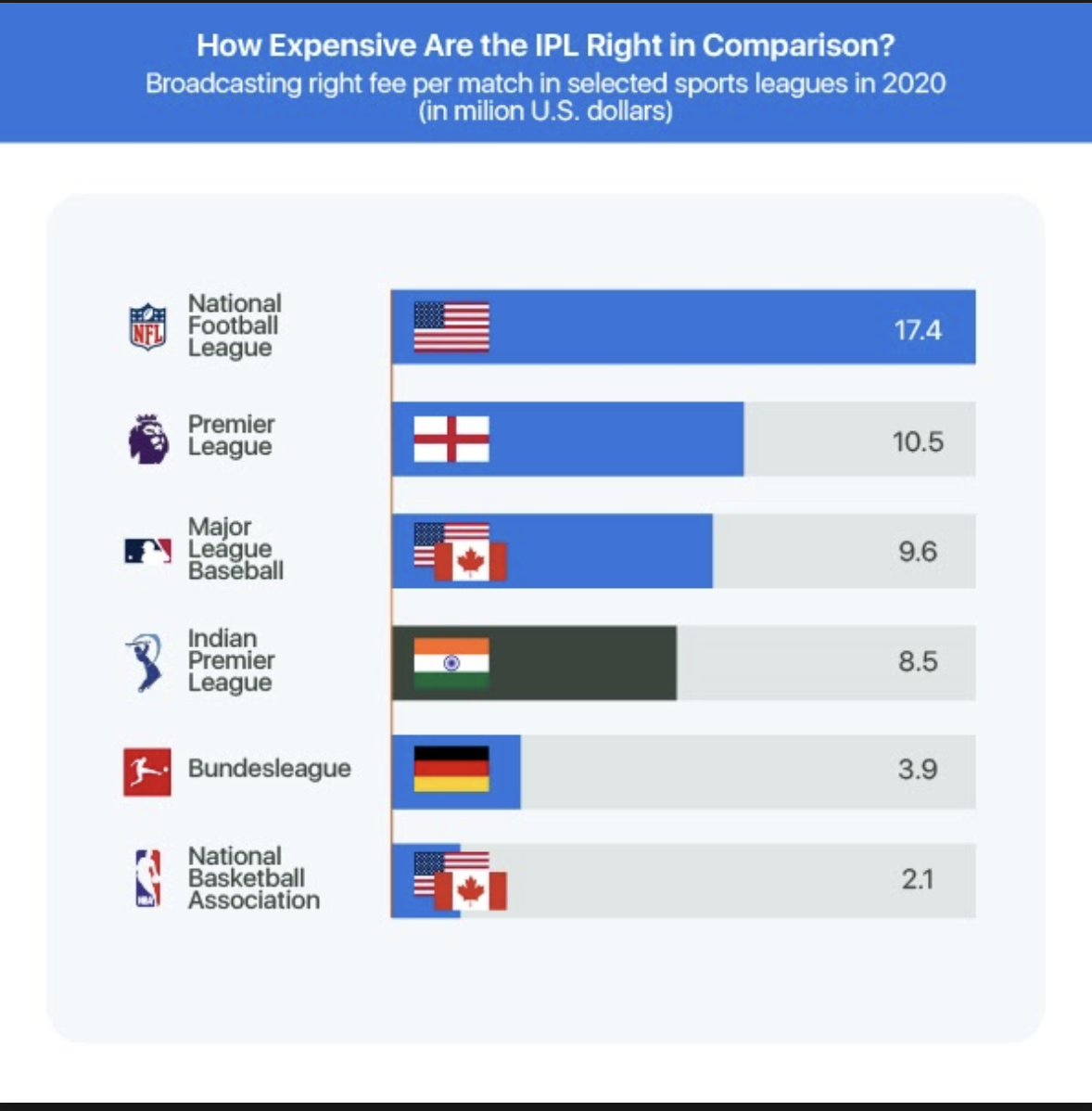
Gaming shows these cultural gaps perfectly. NFL video games like Madden NFL absolutely dominate American markets but consistently lose to FIFA and other soccer-focused titles internationally. American football's inherent complexity - downs, field position, coaching strategy - translates poorly to casual gaming audiences unfamiliar with even basic gameplay concepts. Meanwhile, EA Sports FC works globally because soccer's rules and appeal are universally understood.
Language barriers compound these challenges significantly. NFL terminology like touchdown, quarterback, blitz, red zone means absolutely nothing to international audiences. Soccer vocabulary translates seamlessly across cultures and languages. Social media numbers tell the real story: the NFL maintains 106.7 million global followers - impressive but completely overwhelmed by soccer organizations like Premier League (204.6 million) and Champions League (311.8 million) that crush those numbers.
Can the NFL go global?
The NFL's international push deserves credit. Munich's 2022 game drew 69,811 fans, Frankfurt 2023 attracted 100,000+ with record merchandise sales. Partnerships show commitment. The NFL's Deutsche Kreditbank deal represents serious European investment. ProSieben and RTL bring American football to German TV during good time slots.
Commissioner Goodell suggesting the Super Bowl might leave America? That's bold. But current NFL fan numbers abroad tell the real story: Mexico (23.3 million), Brazil (19.7 million), Canada (7.21 million) - decent numbers but tiny percentages compared to soccer's dominance.
The NFL strategy includes youth programs, flag football, streaming deals targeting new American football fans. London's consistent sellouts prove dedicated fans exist.
But wider adoption remains tough. Future success needs major changes: simpler rules, cheaper equipment, grassroots programs. The NFL faces an impossible challenge - fighting sporting tradition while needing massive infrastructure that soccer never required.
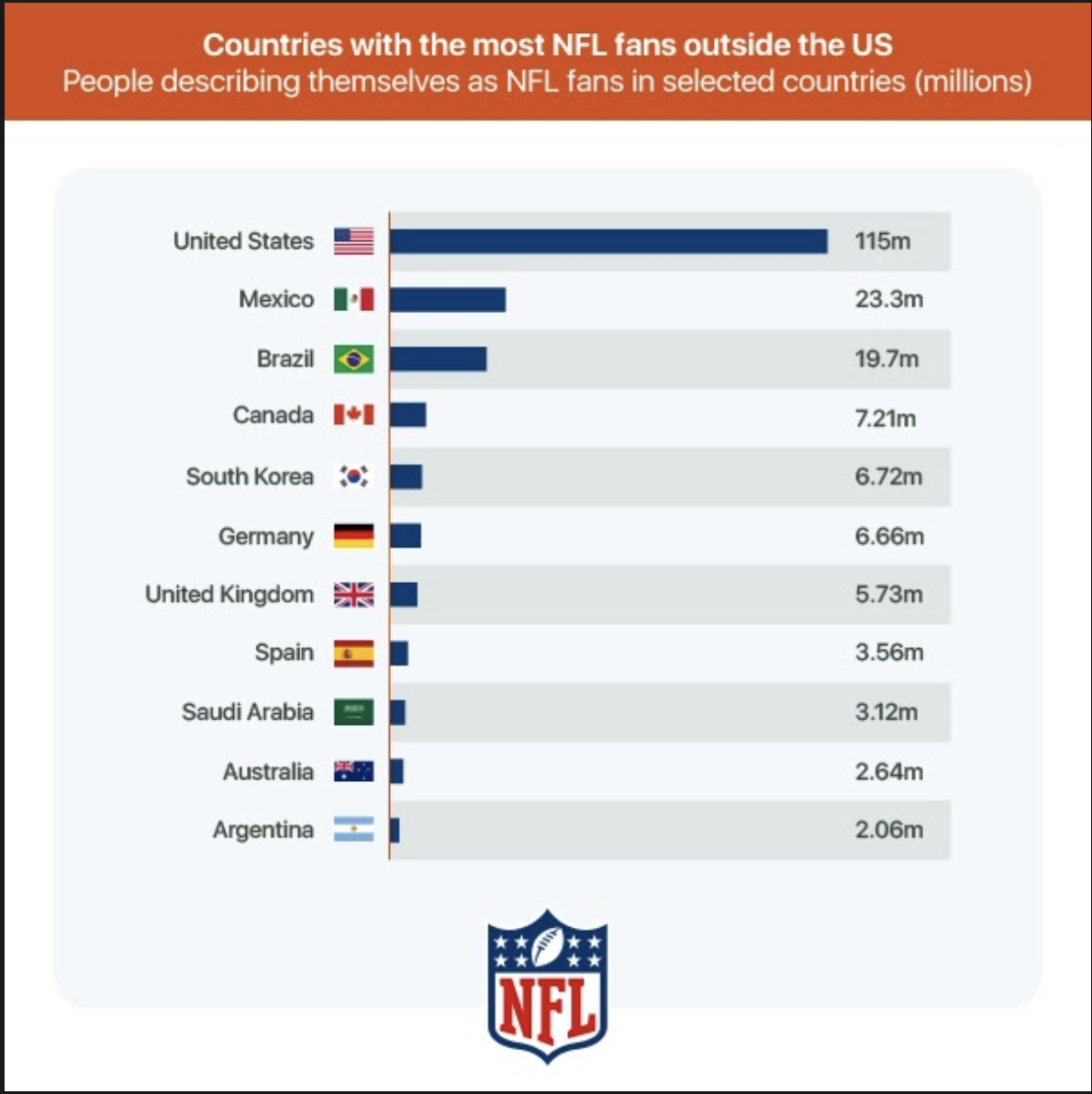
|
|











